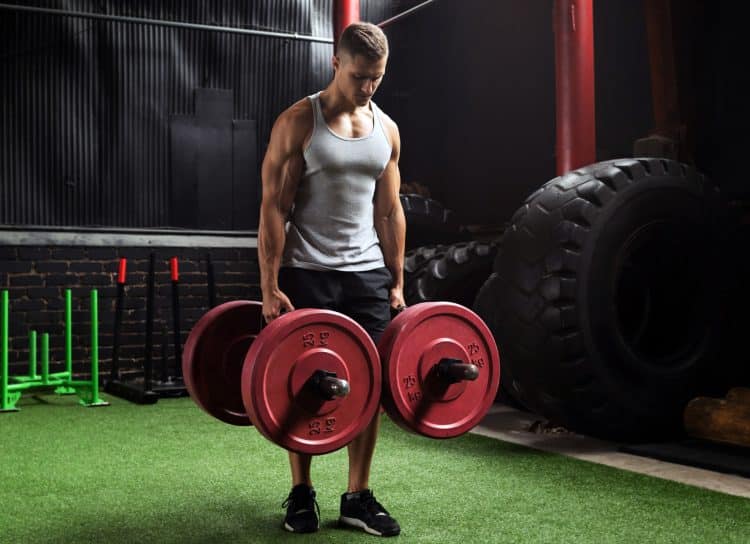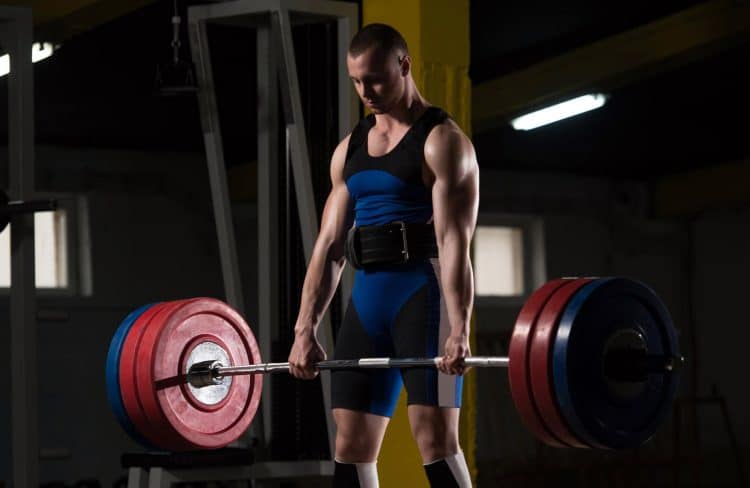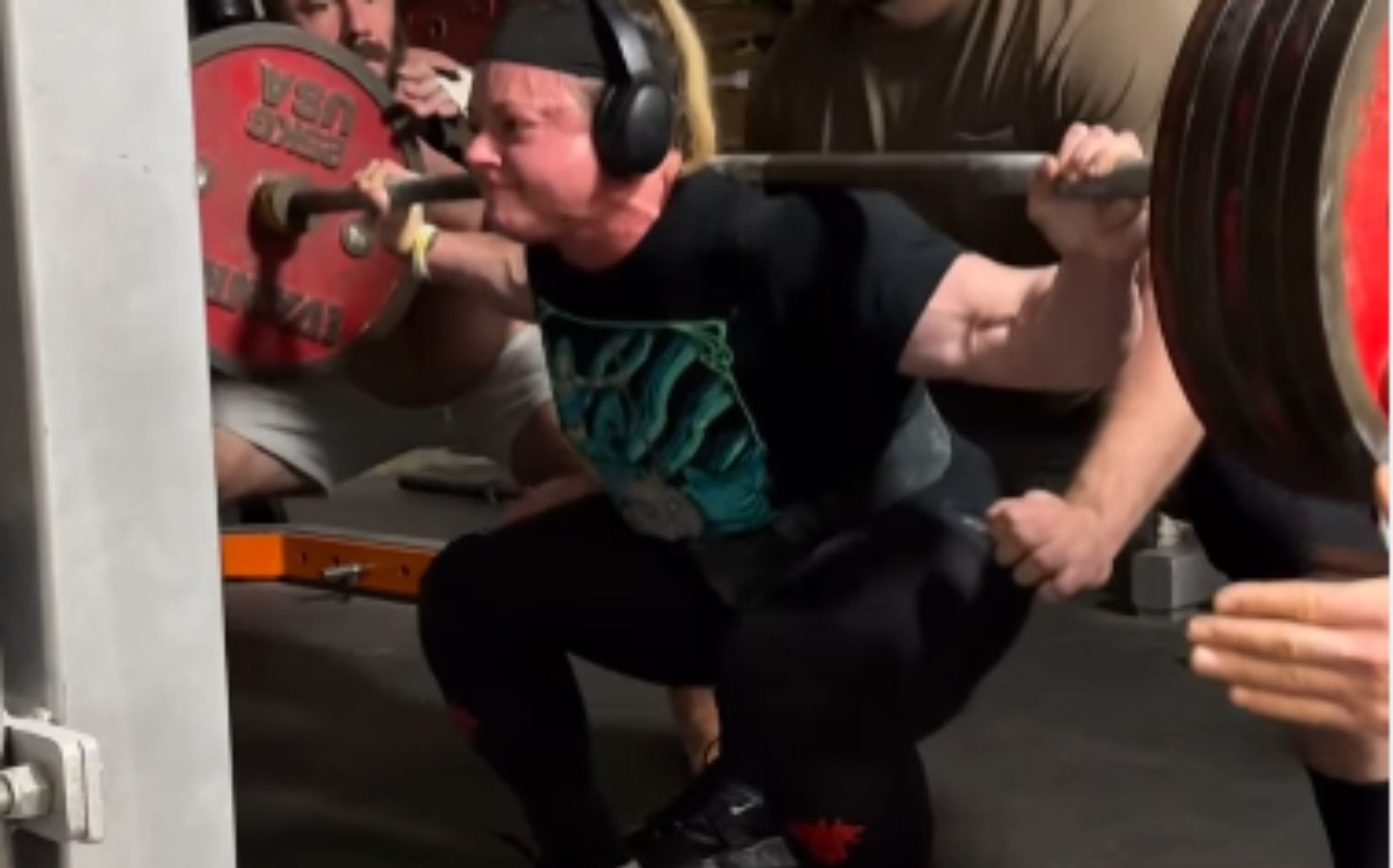Your grip strength can make or break your performance in pulling exercises and can be instrumental in transforming your entire physique. However, it is also one of the biggest limitations for most people.
As a personal trainer with over 17 years of hands-on experience, I can attest that most workout regimes focus on isolation exercises that target specific muscles and leave out functional aspects of grip strength. Some of these exercises might give you a forearm pump, but they don’t translate to overall forearm development and performance boost.
In this article, I reveal the only three exercises you need to build a vice-like grip and jacked forearms and three exercise routines for people of varying experience levels.
The ONLY 3 Grip Exercises You Need
Below are three of my favorite exercises to improve grip strength and stimulate the forearms:
1. Plate Pinch
| Sets & Reps | Equipment Needed | Target Muscles |
| 3 x 30-60 seconds hold (or until failure) | Weight plates | Forearms, grip, fingers |
This is a deceptively simple exercise. However, it isolates the finger flexors, which can help build incredible pinch and grip strength.
Steps:
- Hold a bumper weight plate using a pinch grip in one hand.
- Place the other hand on your hips.
- Keep your chest proud and shoulder blades pulled back and down throughout the exercise.
- Pinch the weight as hard as possible throughout the exercise.
Pro Tip: Avoid using a weight plate with protruding edges, as it can make holding onto it easier. The more challenging it is to hold onto the weight, the more forearm stimulation you’ll get.
Level Up Your Fitness: Join our 💪 strong community in Fitness Volt Newsletter. Get daily inspiration, expert-backed workouts, nutrition tips, the latest in strength sports, and the support you need to reach your goals. Subscribe for free!
| Difficulty | Progression | Regression |
| Beginner | Pinch two smaller plates together | Farmer’s walk |
2. Farmer’s Walk
| Sets & Reps | Equipment Needed | Target Muscles |
| 3 x 20-40 meters (or until failure) | Dumbbells/Kettlebells | Forearms, grip, traps, shoulders, core |
The best thing about training grip and forearm strength is that it requires minimum equipment. The farmer’s walk is one of the best exercises to build grip and overall functional strength.
Steps:
- Stand upright with a hip-width stance while holding a pair of heavy dumbbells or kettlebells at your sides.
- Maintain a proud chest and pull your shoulders back and down.
- Walk for the desired distance.
- Focus on squeezing the dumbbell handles throughout the exercise to maximize forearm stimulation.
Pro Tip: Do not use lifting straps or a hook grip for this exercise. The final few steps of this exercise are the most crucial. Embrace the pain and hold onto the weights for as long as possible.
| Difficulty | Progression | Regression |
| Beginner | Increase weight or distance | Eliminate the walk and just stand with the weights |
3. Dead Hang
| Sets & Reps | Equipment Needed | Target Muscles |
| 3 x Max Hold (until failure) | Pull-up bar | Forearms, grip, lats, biceps |
You don’t necessarily need strength training equipment to train your grip strength and forearms. You can do it with a humble pull-up bar.
Steps:
- Reach up and grab a pull-up bar with a slightly wider-than-shoulder-width overhand grip.
- Allow your body to hang freely while ensuring that your elbows and shoulder blades are fully extended.
- Hang for as long as possible and focus on squeezing the pull-up bar as tightly as you can.
Pro Tip: Avoid using a suicide (thumbless) grip for this exercise, as it can significantly limit your hanging time.
| Difficulty | Progression | Regression |
| Beginner | Use additional resistance (weighted vest) | Assisted dead hang (use a band for support) |
Building Your Grip & Forearm Training Routine
Progressive overload is the name of the game to ensure consistent forearm and grip strength gains. Focus on exercises and programming that suit your unique needs and gradually increase the training volume to avoid muscle and strength plateaus.
Given below are three grip strength workouts for lifters at varying experience levels. I recommend performing these workouts thrice weekly for optimal strength and muscle gains.
Beginners
The goal here is not to lift super heavy, but to master the exercise mechanics and focus on maximizing forearm stimulation.
| Exercise | Sets | Reps |
| Farmer’s Walk | 3 | 30 seconds |
| Plate Pinch | 3 | 30 seconds (each hand) |
| Dead Hang | 3 | 20-30 seconds |
Intermediate
You will increase the overall volume slightly for added stimulus.
| Exercise | Sets | Reps |
| Farmer’s Walk | 3 | 45 seconds with heavier weights |
| Plate Pinch | 3 | 45 seconds with heavier weights |
| Dead Hang | 3 | 30-40 seconds |
| Barbell Wrist Curl | 3 | AMRAP (as many reps as possible) |
Advanced
If you cannot perform the fingertip push-ups, replace them with reverse barbell curls. However, focus on following a full range of motion (ROM) and contracting the target muscles with each rep.
| Exercise | Sets | Reps |
| Farmer’s Walk | 3 | 60 seconds |
| Plate Pinch | 3 | 60 seconds |
| Dead Hang | 3 | 40-60 seconds |
| Towel Pull-Ups | 3 | AMRAP |
| Fingertip Push-Ups (if possible) | 3 | AMRAP |
Aim to increase the working weight by five percent each week and follow the exact training regime for at least eight consecutive weeks to get the best results.
Improvements in Grip Strength in 30 Days
Level Up Your Fitness: Join our 💪 strong community in Fitness Volt Newsletter. Get daily inspiration, expert-backed workouts, nutrition tips, the latest in strength sports, and the support you need to reach your goals. Subscribe for free!
I followed the advanced grip workout for four weeks, and the improvements in my overall strength were unbelievable. Programming grip strength training into my routine helped me set new PRs in multiple lifts. Here is a summary of a few of these lifts:
| Exercise | Before (pounds) | After (pounds) | Difference |
| Deadlifts | 225 | 275 | +50 |
| Barbell Rows | 135 | 155 | +20 |
| Pull-ups | 10 reps | 14 reps | +4 reps |
| Farmer’s Walk | 75 pounds/hand | 100 pounds/hand | +25 pounds/hand |
Carryover To Other Lifts
Working on your grip strength might sound boring and silly, but the results will make you wonder why you didn’t start this practice earlier. Here are some of the benefits you can expect:
Lift Heavier Weight
A strong grip ensures that you don’t lose control of the weights during your set. You will be lifting heavier weights in compound and isolation exercises in no time.
Maintain Proper Form
This is an extension of the previous point. An iron grip keeps you in control of the weight throughout the exercise, allowing you to focus on your training form. This subsequently results in a better mind-muscle connection and target muscle stimulation.
Increase Training Volume
Forearms are a small muscle group, and they usually give out before bigger muscles like the back. Building a more robust grip ensures you can endure more training volume.
Understanding Grip Strength
The benefits of strong and well-developed forearms extend beyond aesthetics. An umbrella review of 11 systematic scientific reviews concluded that grip strength is a useful indicator of general health status, specifically for early all-cause and cardiovascular mortality and disability. (1)
It has also been shown that poor grip strength can lead to various poor health outcomes in older adults, including chronic diseases, functional disabilities, and even mortality. (2)
When you train your grip, you primarily work the muscles in your hands and forearms. There are three main types of grip strength you should know about:
- Crush Grip: It is the squeezing action involved in gripping a barbell or shaking someone’s hand.
- Pinch Grip: It involves holding something between your thumb and finger, for example, a laptop.
- Support Grip: This is the endurance grip and involves things like holding onto a pull-up bar for as long as possible.
The three exercises listed below will target all three aspects of grip strength to ensure overall development.
“Grip strength is an excellent indicator of cognitive ability in later life. However, it is not necessarily because being strong makes your brain better. Instead, it is more likely that people who have better grip strength tend to do other things that keep their grip strength strong, and these activities also have a positive effect on cognitive function. In other words, there seems to be a systemic positive effect.” — Dr. Andrew Huberman (Professor of Neurobiology and Ophthalmology at the Stanford University School of Medicine)
Integrating Grip Training Into Your Routine
Forearms are a relatively small muscle group, and you don’t need to dedicate a whole workout to them. Use the following tips to add grip and forearm training into your existing routine:
- Accessory Work: Do a grip-focused workout at the end of your regular workout, preferably the arm and back sessions. It’s a great way to fully exhaust your forearms.
- Supersets: Pair a grip exercise with a non-related exercise. For instance, perform a set of dead hangs after a set of calf raises.
- Use Grip Tools: Folks who cannot make time for dedicated grip work must invest in specialized equipment like fat grips, thick bars, or grip strengthens. Use them in your regular training to improve your grip and forearm strength.
- Everyday Opportunity: You don’t necessarily need to hit the gym to improve your grip strength. Make subtle changes in your lifestyle to get jacked forearms. Carry your groceries with a pinch grip, use a stress ball at your desk, and do a set of dead hangs on your doorway pull-up bar every time you walk through.
Improvements in Daily Activities
The benefits of a stronger grip and jacked forearms aren’t limited to the gym. They can improve your performance in daily tasks in the following ways:
- Lifting groceries will no longer be a problem, and multiple trips to the car will be a thing of the past.
- Become the hero at your home and office by opening jammed jars.
- It can boost your performance in sports like rock climbing, tennis, and golf.
Conclusion
Building a stronger grip and bigger biceps is easier than most people think. Integrate the three training regimens explained in this article into your existing routine to kickstart the progress.
Remember, consistent training and progressive overload are keys to maximizing the gains. Keep at it for at least eight to 12 weeks, and the results will follow.
If you have any questions about grip training or need help implementing it in your own routine, please post them in the comments below, and I’ll be happy to help!
References:
- Soysal P, Hurst C, Demurtas J, et al. Handgrip strength and health outcomes: Umbrella review of systematic reviews with meta-analyses of observational studies. J Sport Health Sci. 2021;10(3):290-295. doi:10.1016/j.jshs.2020.06.009
- McGrath, R. P., Kraemer, W. J., Snih, S. A., & Peterson, M. D. (2018). Handgrip Strength and Health in Aging Adults. Sports medicine (Auckland, N.Z.), 48(9), 1993–2000. https://doi.org/10.1007/s40279-018-0952-y











